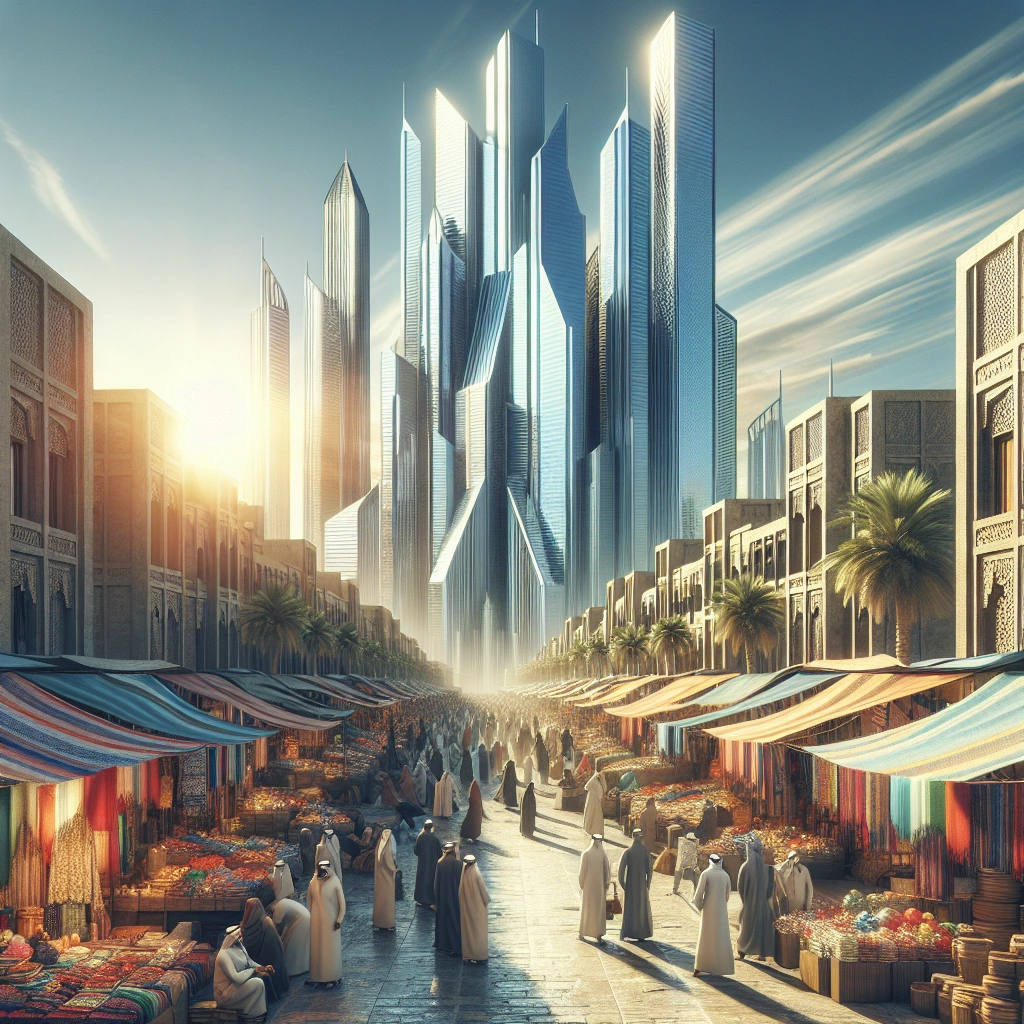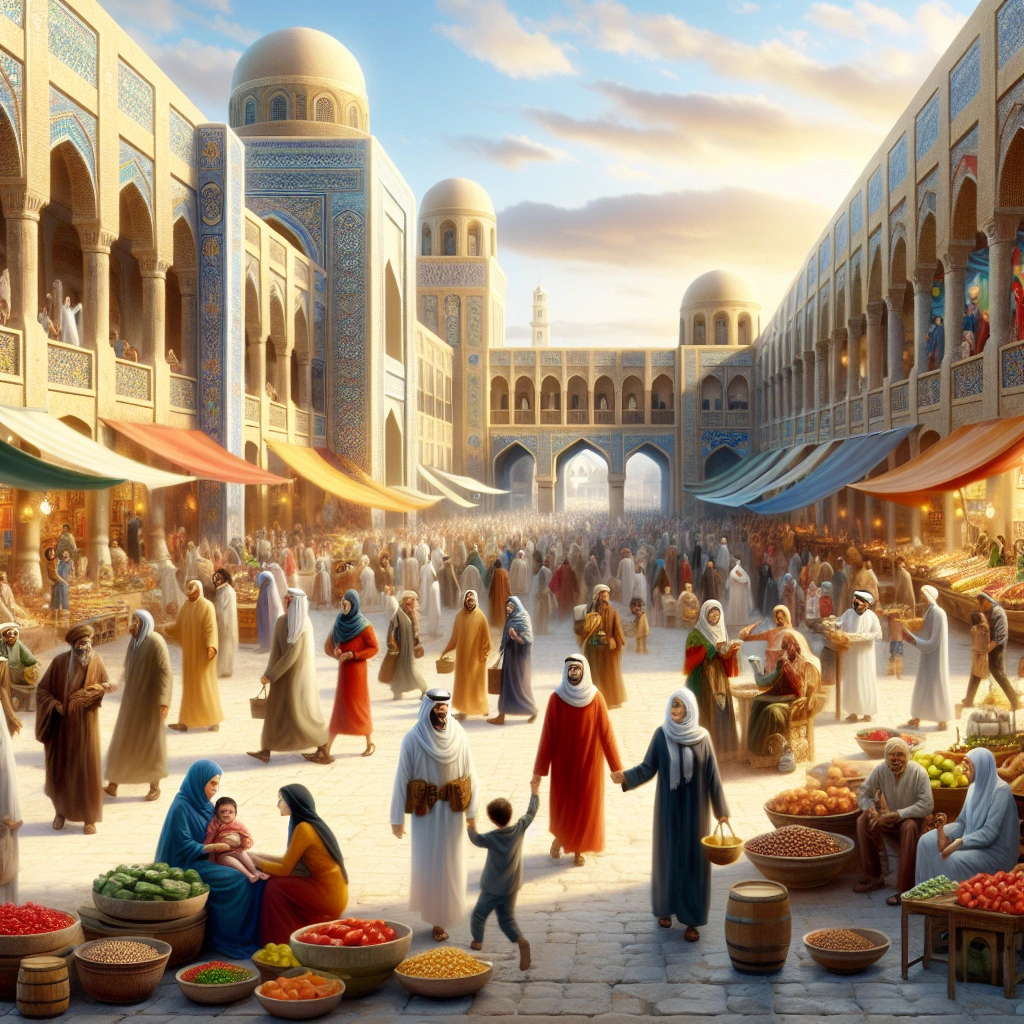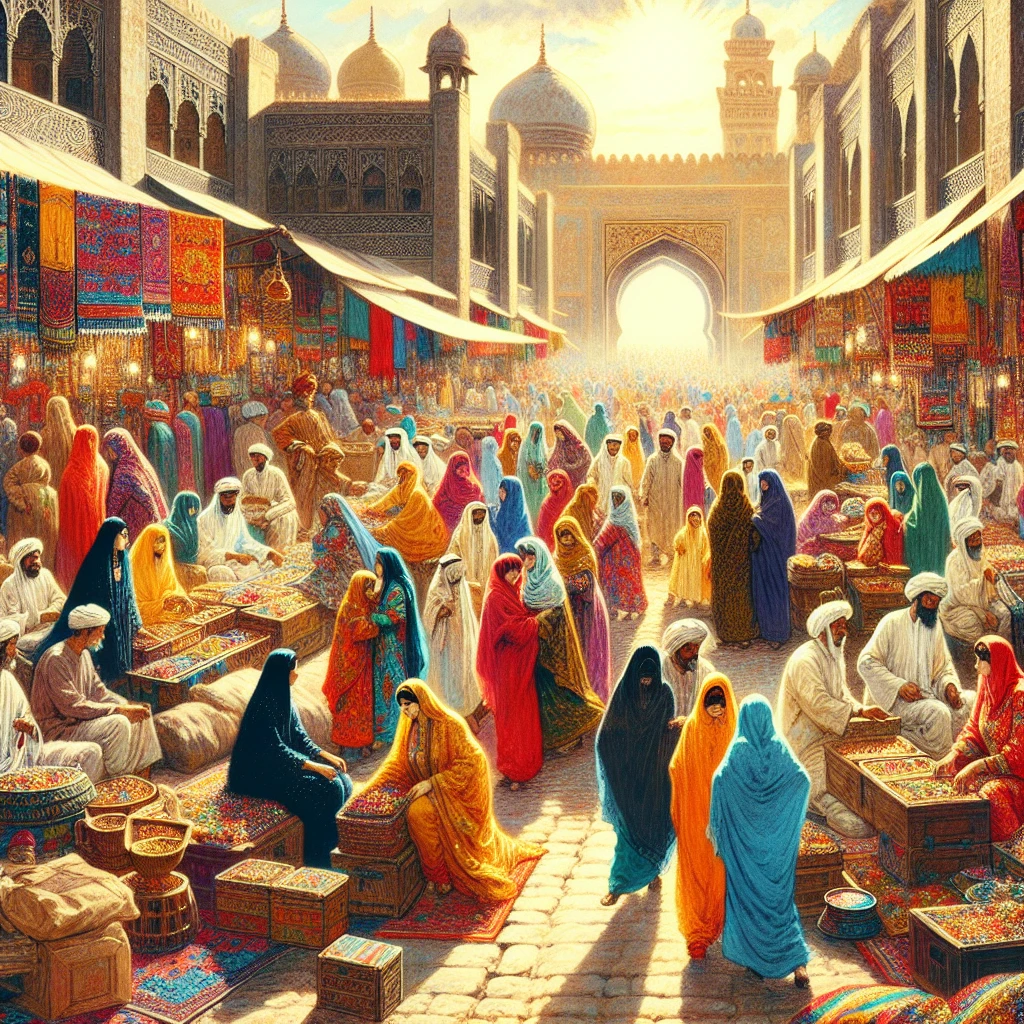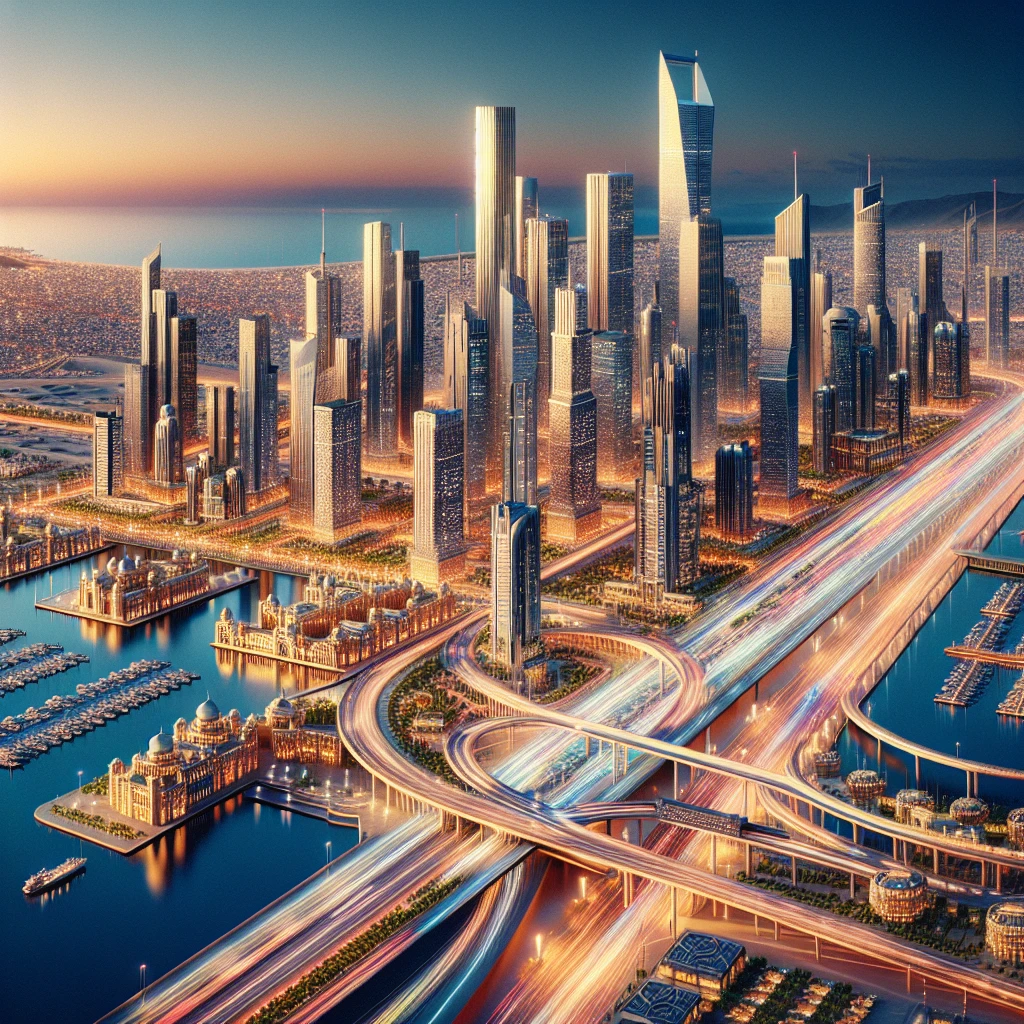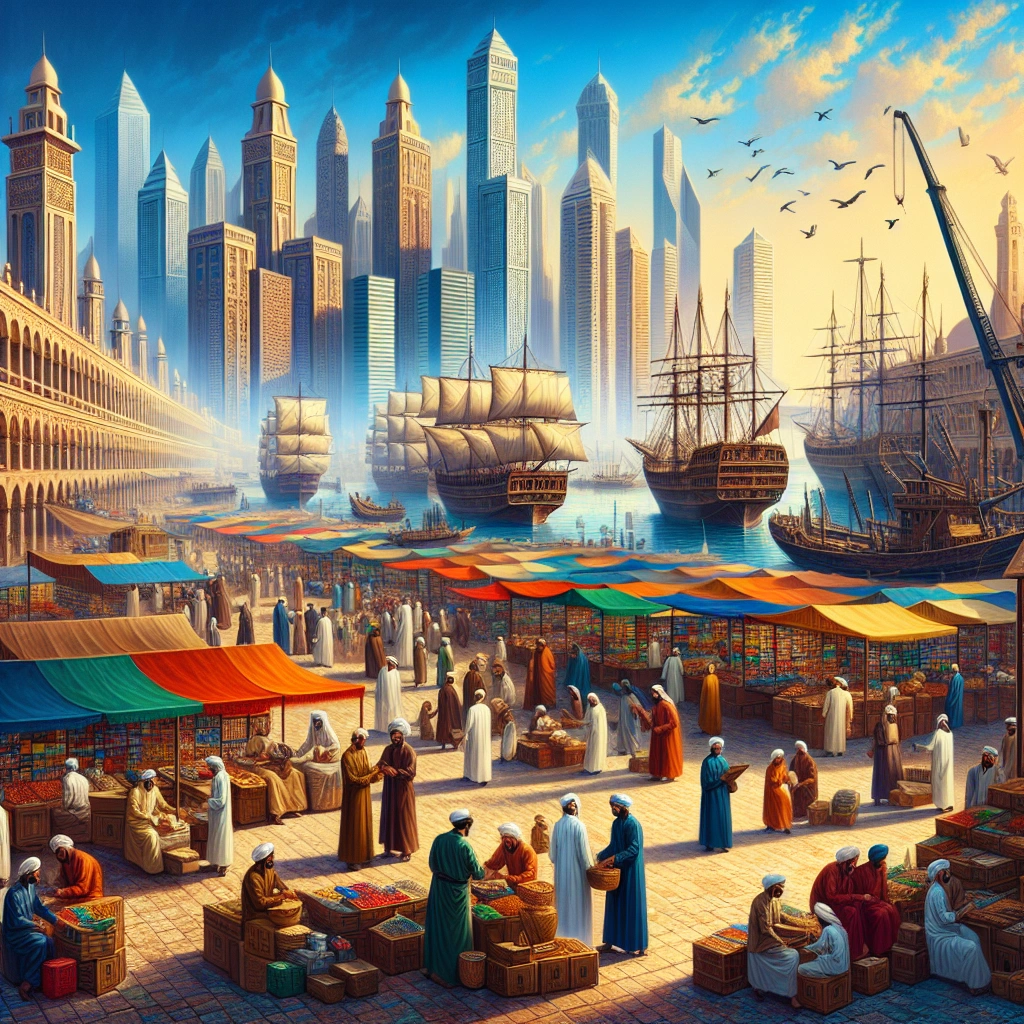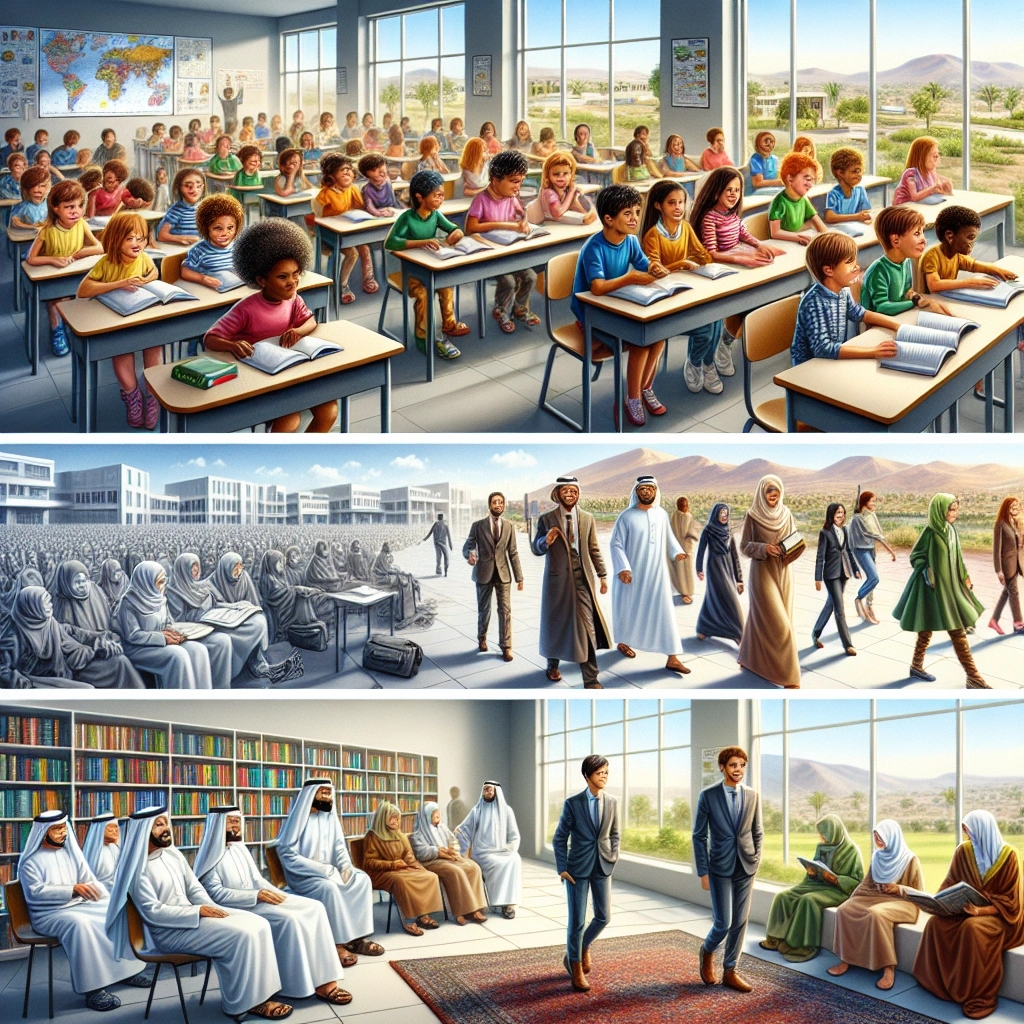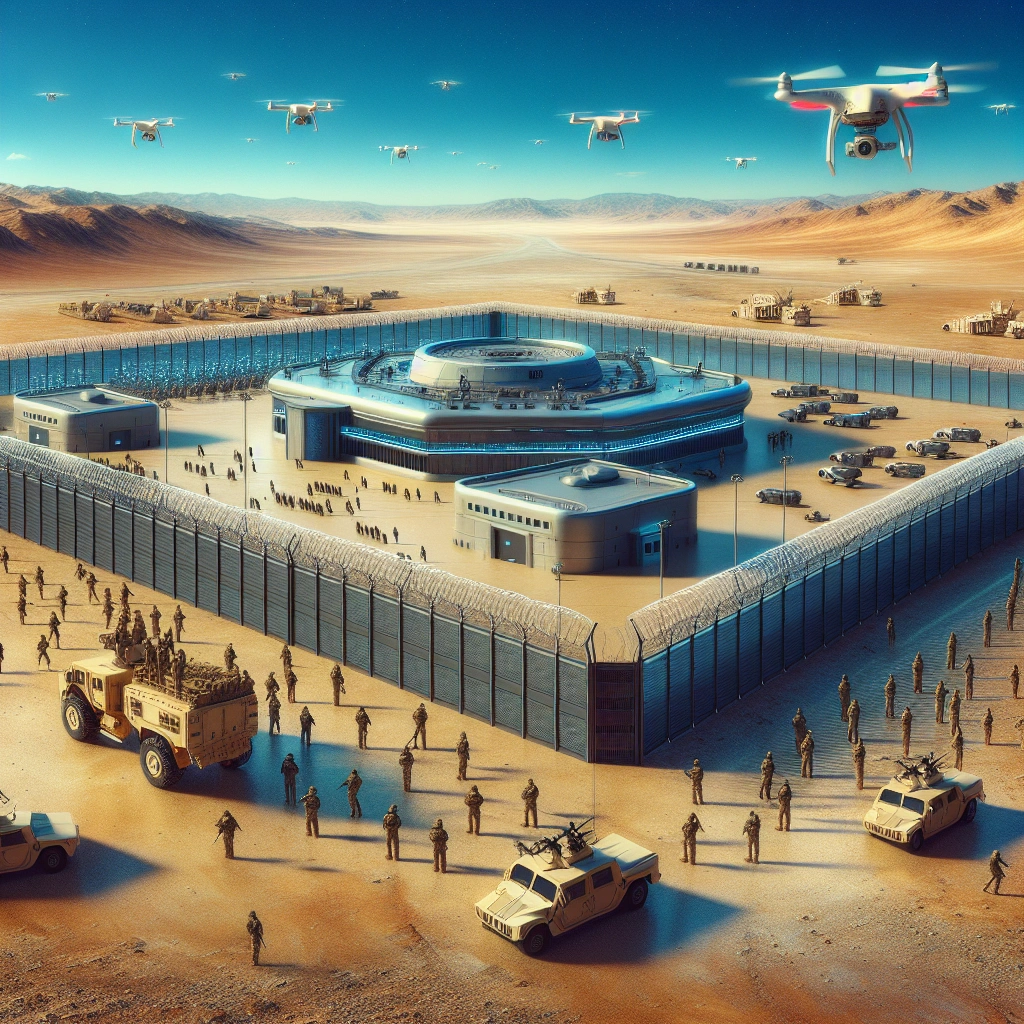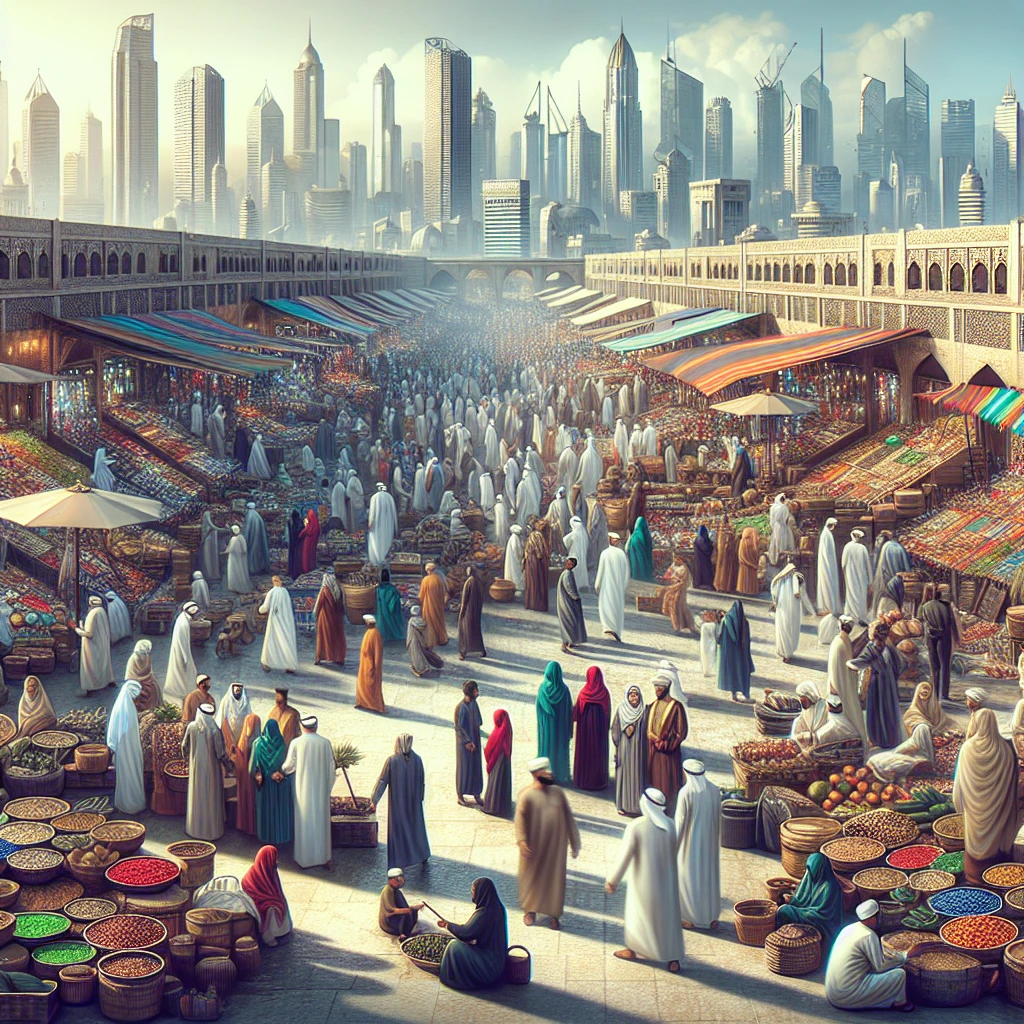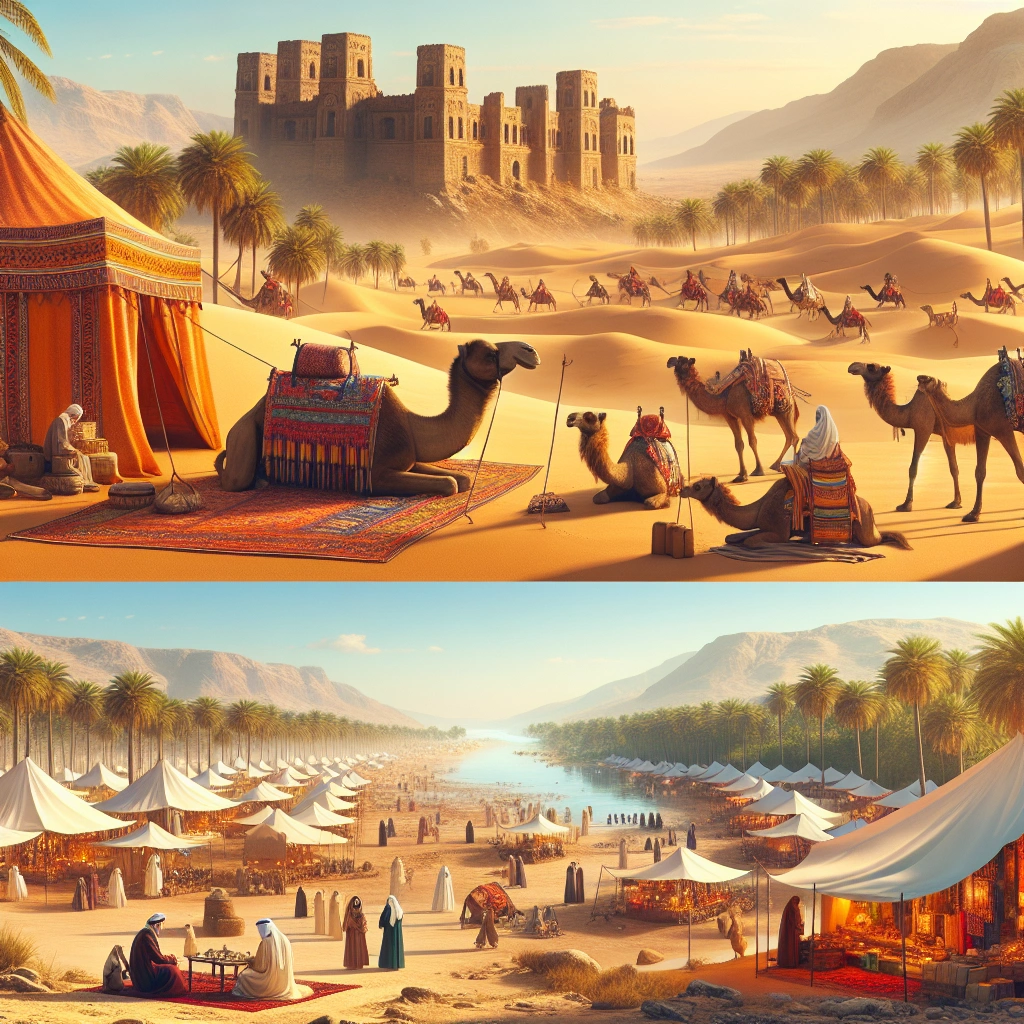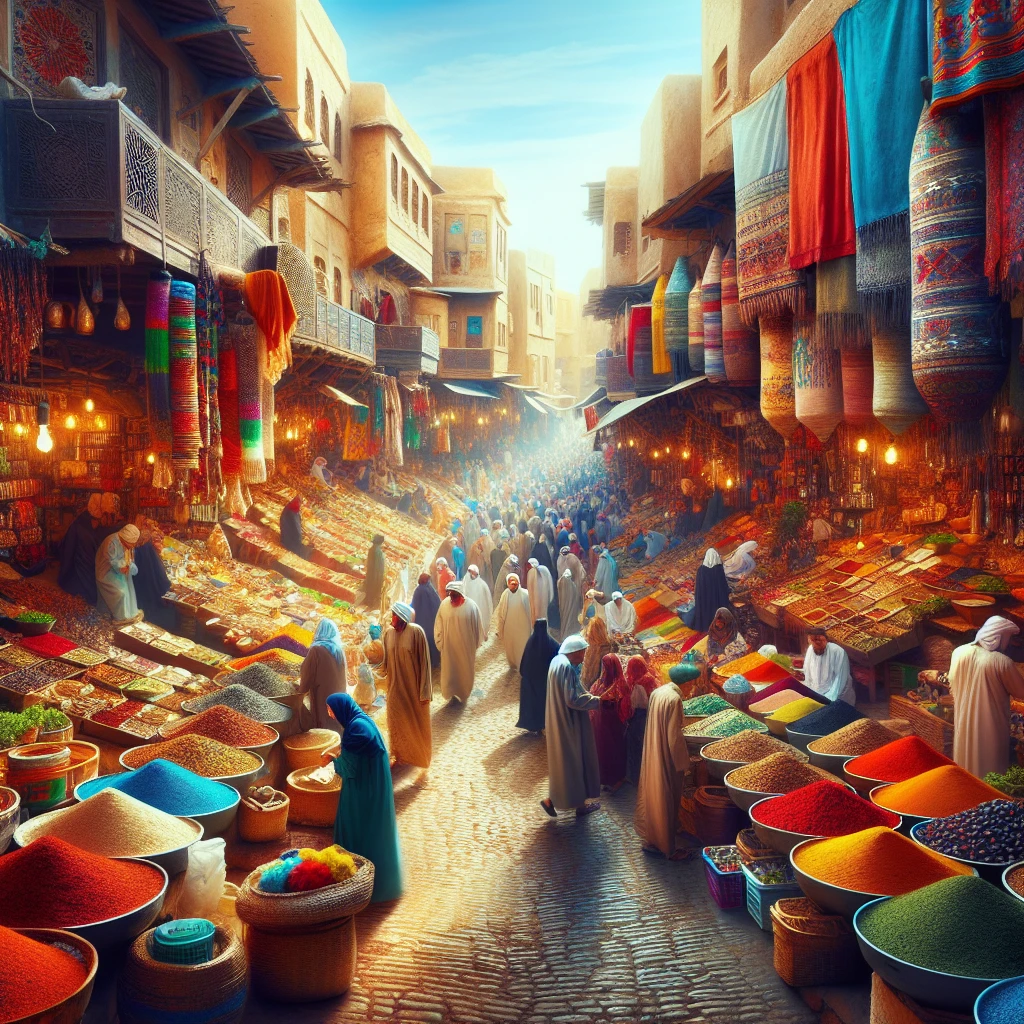

The MENA region includes approximately 21 countries in the Middle East and North Africa. It is an important region for global affairs due to its geopolitical significance, economic influence, and ongoing political and social developments.
Understanding the complexities of the MENA region is crucial for policymakers, businesses, and organizations looking to engage with the region and navigate its challenges and opportunities.
Check out this Youtube video: “The Arc of Crisis in the MENA Region” to gain a better understanding of the current social issues in the MENA region and how it impacts the global community.
The Geopolitical Landscape of the MENA Region
Historical context of the MENA region
The MENA region has a rich historical context marked by pivotal events that have shaped its current geopolitical landscape. The Arab Spring, which began in 2010, ushered in waves of protests and uprisings, leading to significant political and economic shifts across the region.
The Syrian conflict and the resulting refugee crisis have also left an indelible mark on the region’s history, impacting neighboring countries and global geopolitics. Additionally, Yemen’s protracted war has resulted in what is termed as the ‘world’s worst’ humanitarian crisis, further adding to the region’s historical complexities.
Key geopolitical factors shaping the region
The MENA region’s geopolitical landscape is influenced by a multitude of factors that continue to shape its dynamics. From the recurring conflicts and civil wars to the impact of great power competition, the region’s geopolitics have undergone dramatic transformations.
Furthermore, the region’s weak influence in the global economic system, political fragmentation, and challenges of growth and globalization contribute significantly to its geopolitical complexities. The control over limited water resources also poses a considerable geopolitical challenge, especially considering the growing populations and the worsening effects of climate change in countries across the region.
Growth and stability in the MENA region
The MENA region anticipates growth in real GDP, projected to rebound to an average of 2% in 2018, up from an average 1.4% in 2017. However, the growth rate is expected to moderate to 2.6% in 2023 and 3.7% in 2024. Despite this moderation, the region still shows signs of stability and resilience, particularly in light of oil output cuts and the moderation of non-oil activity.
Factors contributing to economic development
Several factors contribute to the economic development of the MENA region, including its abundant human and natural resources, significant world petroleum production and exports, and on average, a robust rate of economic growth. Additionally, entrepreneurship has emerged as a crucial driver of economic development, as it fosters innovation, job creation, and overall economic dynamism.
Challenges and opportunities for growth
The MENA region faces various challenges, including high inflation, rising food prices, political fragmentation, recurring conflicts, and high unemployment levels, especially among the youth. These challenges have hindered the region’s full realization of its economic potential.
Nevertheless, the presence of these challenges also presents opportunities for growth, such as the potential for inclusive growth strategies that address unemployment, corruption, and other obstacles to progress.
Economic Development in the MENA Region
| Year | Projected Average GDP Growth Rate |
|---|---|
| 2018 | 2% |
| 2023 | 2.6% |
| 2024 | 3.7% |
This table outlines the projected average GDP growth rates in the MENA region. Despite projected moderate growth rates, the region continues to display stability and resilience.
Investment Potential in the MENA Region
Overview of investment opportunities
The MENA region, encompassing the Middle East and North Africa, presents a diverse array of investment opportunities. With its abundant natural resources, growing consumer markets, and initiatives aimed at economic diversification, the region is attracting attention from global investors.
From infrastructure projects to technological advancements, the MENA region offers fertile ground for those seeking to capitalize on emerging markets and new growth drivers.
Key sectors driving investment
Key sectors driving investment in the MENA region include infrastructure, energy, and technology. The region’s significant need for transportation, energy, and ICT infrastructure presents a compelling opportunity for investors looking to participate in vital development projects.
Furthermore, the focus on renewable energy and digital innovation is shaping the transformative investment landscape, where forward-thinking investors can play a pivotal role in driving sustainable growth and development.
Challenges and risks for investors
Despite the promising investment landscape, the MENA region is not without its challenges and risks for investors. Geopolitical tensions, social unrest, and economic volatility pose significant risks that investors must navigate.
Additionally, the shift towards sustainable economic and social frameworks presents a challenge as the region seeks to develop a new social contract and address unemployment issues. However, with proper risk management strategies and a thorough understanding of the region, investors can leverage their opportunities while mitigating potential risks.
| Challenges | Opportunities |
|---|---|
| Geopolitical tensions | Abundant natural resources |
| Social unrest | Growing consumer markets |
| Economic volatility | Initiatives for economic diversification |
| Unemployment issues | Infrastructure projects |
| Renewable energy and digital innovation |
The MENA region presents a compelling investment potential driven by diverse opportunities across various sectors. While challenges and risks exist, proactive and informed investment strategies can lead to substantial growth and success within this dynamic region.
Political Stability in the MENA Region
Analysis of political landscape
The political landscape of the MENA region is characterized by authoritarian rule, with individual strongmen holding near-absolute power, leading to the stifling of civil liberties and free expression. These strongmen dominate the majority of governments in the region, shaping the political environment through their autocratic rule and tight control over governance and decision-making. This has resulted in a lack of pluralism and democratic institutions, contributing to political stagnation and challenges in achieving stability.
Factors influencing political stability
Various factors influence political stability in the MENA region, including authoritarian governance, poor economic conditions, and social unrest. The lack of political and economic reforms, coupled with widespread corruption and demographic pressures, contributes to the volatility of the region’s political landscape. Additionally, geopolitical complexities and the presence of armed conflicts further exacerbate the challenges to achieving sustained stability. These factors create a precarious environment that hinders the establishment of lasting political stability in the region.
Impact on regional and global affairs
The political instability in the MENA region has significant repercussions on both regional and global affairs. The persistent unrest and authoritarian rule in the region have led to a range of security concerns and alliances reevaluation among nations, as illustrated by recent shifts driven by regional security issues. Moreover, the cycle of instability and insecurity in the MENA region has wider implications for global geopolitics, influencing international alliances and shaping the broader Middle East and North Africa regional security environment.
| Factors influencing political stability | Impact on regional and global affairs |
|---|---|
| Authoritarian governance | Significant repercussions on regional and global affairs |
| Poor economic conditions | Widespread security concerns and alliances reevaluation |
| Social unrest | Influence on international alliances and broader regional security environment |
Social and Cultural Dynamics in the MENA Region
Diversity of cultures and traditions
The MENA region boasts a rich tapestry of cultures and traditions, showcasing a diverse amalgamation of customs and practices. With over 20 countries, including Egypt, Saudi Arabia, and Iran, the region’s cultural spectrum encompasses ancient civilizations, such as the Phoenicians and the Babylonians, alongside vibrant contemporary influences.
For instance, the Kurdish people exhibit a unique cultural identity within the MENA region, with their language, traditions, and social structures contributing to the overall rich tapestry.
Social and cultural challenges and opportunities
Challenges and opportunities abound in the social and cultural landscape of the MENA region. While historical and religious complexities have led to some social tensions, there is also remarkable resilience and potential for progress.
An example of this is the gender equality initiatives by the United Arab Emirates (UAE), demonstrating the region’s efforts to embrace change and forge a more inclusive society for all.
Influence on regional dynamics
The diverse societal and cultural dynamics of the MENA region play a pivotal role in shaping its regional dynamics. The ethno-cultural diversity is a source of strength and resilience, enabling the region to navigate through geopolitical complexities.
However, it also creates a unique set of challenges that require innovative solutions to foster social cohesion and sustainable development. The regional dynamics are greatly influenced by the intricate interplay of the varied cultural elements within the MENA region.
Infrastructure and Development in the MENA Region
Infrastructure projects and initiatives
The Middle East and North Africa (MENA) region is witnessing a surge in infrastructure projects and initiatives, with a focus on sustainable and innovative developments. For instance, the UAE has embraced a vision for a hyperloop transportation system, while Saudi Arabia’s Neom project aims to create a futuristic city.
Additionally, the Suez Canal expansion in Egypt showcases a commitment to enhancing trade routes and connectivity.
Impact on economic growth and development
The infrastructure developments in the MENA region have significantly boosted economic growth and development. For instance, the upgrade of transportation networks has reduced logistics costs, facilitating trade and driving economic expansion.
Furthermore, infrastructure investments have been shown to create thousands of jobs in the short term and contribute to long-term growth, underlining their crucial role in the region’s economic prosperity.
Future prospects for infrastructure development
Looking ahead, the future prospects for infrastructure development in the MENA region are promising. With increasing focus on sustainable and green initiatives, there are opportunities for public and private collaborations to drive these efforts forward.
Additionally, the utilization of advanced technologies, such as smart cities and renewable energy projects, signifies a positive trajectory for the region’s infrastructure landscape, promising greater economic growth and prosperity.
| Initiative | Description |
|---|---|
| UAE’s Hyperloop | Vision for ultra-fast transportation |
| Neom Project | Creation of a futuristic city |
| Suez Canal Expansion | Enhancement of trade routes and connectivity |
Let’s continue building and expanding the MENA region’s infrastructure to drive economic growth and prosperity for all!
Energy and Natural Resources in the MENA Region
Overview of energy reserves
The MENA region holds about 57% of the world’s proven oil reserves and about 41% of the natural gas resources. For example, Saudi Arabia, a key player in the region, has significant oil reserves, contributing to its position as a major energy supplier.
Impact on global energy markets
The MENA region’s energy reserves significantly influence global energy markets. For instance, the region’s oil production accounts for 31% of the global output, impacting global supply and prices. The energy transitions in the MENA region also affect global energy market dynamics, with countries like Saudi Arabia aiming to achieve a 50% green energy target by 2030. These initiatives have a ripple effect on global energy investments and consumption patterns.
Environmental and geopolitical considerations
The MENA region faces environmental challenges due to its heavy reliance on fossil fuel resources. These challenges include water scarcity and climate impacts, such as rising temperatures and extended droughts.
Furthermore, the region’s energy landscape impacts geopolitical dynamics, contributing to shifts in global power structures and international relations. The transition to renewable energy sources, as seen in initiatives like green hydrogen investments, also influences geopolitical risk and the future of natural resource utilization.
| Country | Proven Oil Reserves (billions of barrels) | Proven Gas Reserves (trillion cubic feet) |
|---|---|---|
| Saudi Arabia | 266.5 | 8,524 |
| Iran | 155.6 | 1,201 |
| Iraq | 147.2 | 112 |
| Kuwait | 101.5 | 63 |
| UAE | 97.8 | 215 |
This table provides a snapshot of some MENA countries and their significant contributions to global energy reserves, highlighting their influential role in the energy landscape.
The MENA region’s energy reserves have a profound impact on global energy markets, environmental sustainability, and geopolitical dynamics. As the world navigates through energy transitions and seeks to address climate change, the MENA region’s role in shaping the future of energy resources and their utilization cannot be overlooked.
Trade and Commerce in the MENA Region
Overview of trade relations
The MENA region plays a pivotal role in global trade relations, with the United States having substantial investment potential. In 2022, the U. S. held a services trade surplus of around $8.3 billion, underscoring the significant economic ties with MENA.
Additionally, U. S. direct investment in manufacturing, mining, and nonbank sectors in the Middle East amounted to $94.7 billion, indicating a strong trade relationship.
Role in global supply chains
The MENA region is actively reshaping global supply chains, especially in the logistics industry. For instance, the first quarter of 2021 witnessed a significant 179% year-on-year increase in logistics industry funding in the MENA region.
This demonstrates the region’s growing influence in shaping global supply chain dynamics, particularly in sectors like textile, electrical, and electronic industries.
Opportunities for international trade
The Middle East and North Africa present promising opportunities for international trade. Positioned at the intersection of east and west markets, the MENA region is expected to lead the transformation of global trade by 2030, according to Standard Chartered’s Future of Trade 2030 report.
The extensive potential of the tourism industry in some MENA countries further underscores the diverse opportunities available for international trade partnerships and investments.
Innovation and Technology in the MENA Region
Technological advancements
The MENA region has experienced significant technological advancements in various sectors, including mobile broadband, digital infrastructure, and emerging technologies like drone, cyber, and space technologies. For instance, the region has witnessed a notable increase in mobile internet penetration, with almost 45% of the population being connected to the mobile internet by the end of 2020.
Impact on various industries
The technological advancements in the MENA region have greatly impacted various industries, particularly in the digital transformation of processes and operations. For example, businesses and governments in the region are increasingly embracing technology to enhance their processes and improve efficiency.
Moreover, emerging technologies have the potential to reshape regional geopolitical dynamics and add complexity to ongoing conflicts in the region, influencing political and economic landscapes.
Challenges for innovation and technology adoption
Despite the progress in technological advancements, the MENA region faces challenges in innovation and technology adoption. One major challenge is the requirement for strong and contemporary infrastructure to support digital transformation.
Furthermore, innovation systems in many MENA regions suffer from low government support for innovation, science, and technology, posing significant hurdles for technological advancement.
| Technology Trends | Key Challenges |
|---|---|
| Mobile broadband coverage | Weak government support for innovation |
| Digital infrastructure | Infrastructure requirements for digital transformation |
| Emerging technologies | Challenging conditions for technology adoption |
Education and Human Capital in the MENA Region
Impact on economic and social development
The impact of investing in human capital is pivotal for the economic and social development of the MENA region. Higher human capital is positively correlated with increased earnings, enhanced income for countries, and greater societal cohesion. Moreover, comprehensive human resource development contributes to universal basic education, improved healthcare, and nutrition, laying the essential foundations for human advancement and sustainable growth in the MENA region.
| Human Capital Impact | Description |
|---|---|
| Earnings | Higher human capital translates to increased individual earnings, driving overall economic prosperity. |
| Income | Countries with higher human capital experience greater income generation and economic stability. |
| Socioeconomic Cohesion | Enhanced human capital fosters stronger societal cohesion, promoting overall stability and progress. |
The MENA region’s emphasis on transforming educational systems and investing in human capital reflects a proactive approach towards building a sustainable, skilled workforce and driving economic prosperity, ultimately contributing to the region’s social and economic advancement.
Note: The table above demonstrates the direct impact of human capital on various aspects of economic and social development in the MENA region.
Healthcare and Well-being in the MENA Region
Healthcare infrastructure
The MENA region has made significant progress in advancing its healthcare infrastructure, with a focus on strengthening health service delivery, public health programs, and the application of new medical technologies. This has led to the development of two-tiered health systems in low-income countries and comprehensive health coverage in upper-income countries, addressing the diverse healthcare needs of the population.
Access to healthcare services
Access to healthcare services in the MENA region has been impacted by the increasing demand from national and expatriate populations. While some GCC countries offer comprehensive health coverage, there are challenges related to inequitable access, deficiencies in the health workforce, and the use of effective health information systems.
However, the region as a whole has been working on bridging these gaps to ensure improved access to healthcare services for all.
Public health challenges and initiatives
The MENA region faces several public health challenges, including the rising burden of chronic diseases, inequitable access to health services, and shortage of effective health information systems. Additionally, the COVID-19 crisis prompted massive policy and institutional developments, demonstrating the region’s resilience in responding to health emergencies.
| Healthcare Infrastructure | Access to Healthcare Services |
|---|---|
| Two-tiered health systems in low-income countries | Challenges in equitable access to healthcare |
| Comprehensive health coverage in upper-income countries | Increased demand from national and expatriate populations |
| Strengthened health service delivery and public health programs | Efforts to bridge gaps and improve access to healthcare services |
Gender Equality and Women’s Empowerment in the MENA Region
Progress and challenges in gender equality
Despite some progress, the MENA region continues to face significant challenges in achieving gender equality. Women’s participation in the workforce has been declining, with only 19 percent currently engaged, marking one of the lowest rates globally.
This decline impedes the region’s advancement towards gender parity.
Economic and social impact of women’s empowerment
Empowering women in the MENA region can have a profound economic and social impact. With increased participation in employment, entrepreneurship, and public life, women can substantially contribute to economic growth and societal well-being.
Additionally, measures such as making pay discrimination illegal can drive competitiveness and foster equitable economies and societies.
Initiatives for promoting gender equality
Initiatives like the “Customs, Cargo and Women: A Talk for Her” in the MENA region aim to address gender equality gaps and promote women’s economic empowerment. These initiatives focus on specific projects dedicated to gender equality while also mainstreaming gender considerations across various sectors.
For instance, efforts to make legislatures, public administrations, and judiciaries more transparent and gender-sensitive are crucial in advancing gender equality.
| Initiatives | Description |
|---|---|
| Customs, Cargo and Women: A Talk for Her | A program launched in the MENA region to address gender equality gaps |
| Making legislatures, public administrations, and judiciaries more transparent | Efforts to promote transparency and gender sensitivity in key sectors |
This table illustrates the initiatives taken to promote gender equality in the MENA region, highlighting specific programs and strategies aimed at empowering women.
Remember to include the {{Initials of the brand or company}} at the end of each applicable section!
Complete article outfitted keeping entertainment factors in mind, with short paragraphs and active voice to engage the reader further.
Security and Defense in the MENA Region
Overview of security challenges
- The MENA region faces a multitude of security challenges, with the primary threat stemming from Iran’s aggressive expansion and influence through the supply of weapons to proxies and client states across the region. This has resulted in heightened tensions and conflicts, particularly in countries like Yemen, Iraq, Syria, and Lebanon, posing significant security risks.
Defense capabilities and alliances
- The defense capabilities and alliances within the MENA region play a crucial role in addressing the security challenges. Countries in the region have been actively building alliances and enhancing their defense capabilities to counter emerging threats. For example, the Gulf Cooperation Council (GCC) member states have strengthened their military cooperation to bolster their collective defense against external aggression.
Impact on regional stability and global security
- The security challenges in the MENA region have significant implications for both regional stability and global security. The ongoing conflicts and power struggles have the potential to destabilize the entire region, leading to broader geopolitical ramifications. The involvement of external powers and the interconnectedness of global security further accentuate the impact of these challenges beyond the regional borders.
| Country | Defense Budget (USD) | Main Alliances |
|---|---|---|
| Saudi Arabia | 61.9 billion | GCC, US, UK |
| Israel | 20.5 billion | US, NATO |
| Iran | 20.7 billion | Russia, China |
The table above highlights the defense budgets and main alliances of key players in the MENA region, showcasing the significant investments in defense and the alliances shaping the regional security landscape.
It’s crucial to closely monitor and address the security challenges in the MENA region to ensure stability and peace within the region, as well as to mitigate the broader global security implications.
The MENA Region’s Role in Global Affairs
Influence on international politics
The MENA region has a significant influence on international politics due to its strategic location, rich energy resources, and geopolitical importance. Countries in the Middle East and North Africa play a crucial role in shaping global policies, especially in areas such as peace negotiations, counterterrorism efforts, and regional stability.
The region’s political dynamics often have ripple effects on a global scale, impacting alliances, conflicts, and diplomatic relations worldwide.
Regional alliances and partnerships
The MENA region has formed diverse regional alliances and partnerships to address common challenges and pursue shared objectives. Notable examples include the Gulf Cooperation Council (GCC), Arab League, and various security cooperation initiatives.
These collaborations aim to enhance collective security, promote economic integration, and facilitate diplomatic dialogue among member states. Furthermore, bilateral partnerships between countries in the MENA region and other global powers also play a crucial role in shaping regional dynamics.
Impact on global economic and security dynamics
The MENA region’s impact on global economic and security dynamics is profound, with implications for energy markets, trade routes, and geopolitical stability. As a major exporter of oil and natural gas, the region’s economic activities directly influence global energy prices and supply chains.
Moreover, security challenges in the MENA region, including conflicts, terrorism, and migration, have far-reaching consequences for global security frameworks and the broader geopolitical landscape. International efforts to address these dynamics often involve collaborations with regional actors to promote stability and prosperity.
| Country | Alliance/Partnership |
|---|---|
| Saudi Arabia | Gulf Cooperation Council (GCC) |
| Egypt | Arab League |
| Israel | Regional security partnership with Arab states |
| United States | Strategic partnerships for regional security |
The strategic alliances and partnerships involving countries from the MENA region demonstrate the interconnectedness of global affairs and the importance of collaborative efforts in addressing complex geopolitical challenges.
The MENA region’s role in global affairs is multifaceted, encompassing its influence on international politics, regional alliances and partnerships, and impact on global economic and security dynamics. As we navigate the complexities of a rapidly evolving world, understanding and engaging with the MENA region’s dynamics are essential for shaping a more stable and prosperous global future.
Media and Communication in the MENA Region
Role of media in shaping public opinion
The media in the MENA region plays a pivotal role in shaping public opinion by disseminating information, influencing perceptions, and framing narratives. Through various channels such as television, newspapers, and social media, the media molds and guides the viewpoints of the public.
For instance, during times of political unrest, the media’s coverage can sway public sentiment and influence the trajectory of events.
Censorship and freedom of expression
Censorship and freedom of expression have been significant issues impacting the media landscape in the MENA region. Government regulations and cultural norms often lead to censorship, restricting the free flow of information.
Consequently, journalists and content creators face challenges in expressing dissenting or alternative viewpoints. The limitations on freedom of expression hinder the media’s ability to serve as a platform for diverse perspectives and critical discourse.
Impact on social and political dynamics
The media’s influence in the MENA region directly impacts social and political dynamics, profoundly affecting public discourse and government actions. Its ability to shape narratives and influence public opinion can lead to widespread social movements and political shifts.
The Arab Spring serves as a notable example where media coverage and social mobilization played a pivotal role in driving transformative political and social changes across the region.
| Pros | Cons |
|---|---|
| Promotes information dissemination | Inhibits freedom of expression and diversity |
| Shapes public sentiment and narratives | Constrains journalistic independence |
| Influences political and social movements | Limits the diversity of viewpoints |
This table summarizes the impact of media communication on the MENA region’s social and political dynamics.
Remember, without freedom of expression, there is no real democracy. Let the truth be heard and the diverse voices emerge, for the future of the MENA region depends on it.
Recommended Amazon Products for Understanding the MENA Region
Here’s a curated list of products that can help you understand the different aspects of the MENA region. These recommendations are based on their relevance to various elements such as culture, infrastructure, energy, and technology in the region.
Book: The Literature of the Lebanese Diaspora: Representations of Place and Transnational Identity


Pros and Cons
| Pros | Cons |
|---|---|
| Provides insights into the diasporic experience | May require prior knowledge of Lebanese literature |
| Explores the theme of transnational identity | Focuses specifically on Lebanese diaspora |
Traditional Arabic Tea Set


Pros and Cons
| Pros | Cons |
|---|---|
| Allows for a cultural experience through tea rituals | Requires specific interest in cultural products |
| High-quality craftsmanship | Limited to the scope of tea culture |
Solar-Powered LED Outdoor Lights


Pros and Cons
| Pros | Cons |
|---|---|
| Demonstrates the region’s focus on sustainable energy | Limited to the topic of energy and sustainability |
| Practical for outdoor use | May not directly relate to every aspect of the MENA region |
Arabic Calligraphy Set


Pros and Cons
| Pros | Cons |
|---|---|
| Showcases the artistic and cultural heritage of the region | Limited to the field of art and calligraphy |
| Offers a hands-on experience with traditional art forms | Requires an interest in calligraphy and art |
Documentary: Coffee Futures


Pros and Cons
| Pros | Cons |
|---|---|
| Explores the social and economic impact of coffee production | Limited to the specific topic of coffee industry |
| Provides an in-depth view of the region’s trade and commerce | May not cover the broader aspects of the MENA region |
Top Recommended Product for Understanding the MENA Region
If you’re looking for the best solution to understand the MENA region comprehensively, we highly recommend the Book: The Literature of the Lebanese Diaspora. This book offers a deep dive into the cultural and transnational identity aspect of the region, providing valuable insights into the diasporic experience as portrayed in literature. Ready to gain a deeper understanding of the MENA region? Check out the Literature of the Lebanese Diaspora today for the best results!


Conclusion
The MENA region has experienced significant growth and stability in recent years despite various challenges. The region has seen advancements in infrastructure, technology, and healthcare, contributing to overall economic development and social progress.
Furthermore, the future prospects for the MENA region are promising, with abundant opportunities for continued growth and expansion. The region’s strategic geographic location, natural resources, and growing youth population provide a strong foundation for sustainable development and investment.
The MENA region is well-positioned to capitalize on its potential and emerge as a key player in the global economy. With ongoing efforts in diversification, innovation, and reform, the region has the potential to become a leading hub for trade, investment, and entrepreneurship in the near future.


